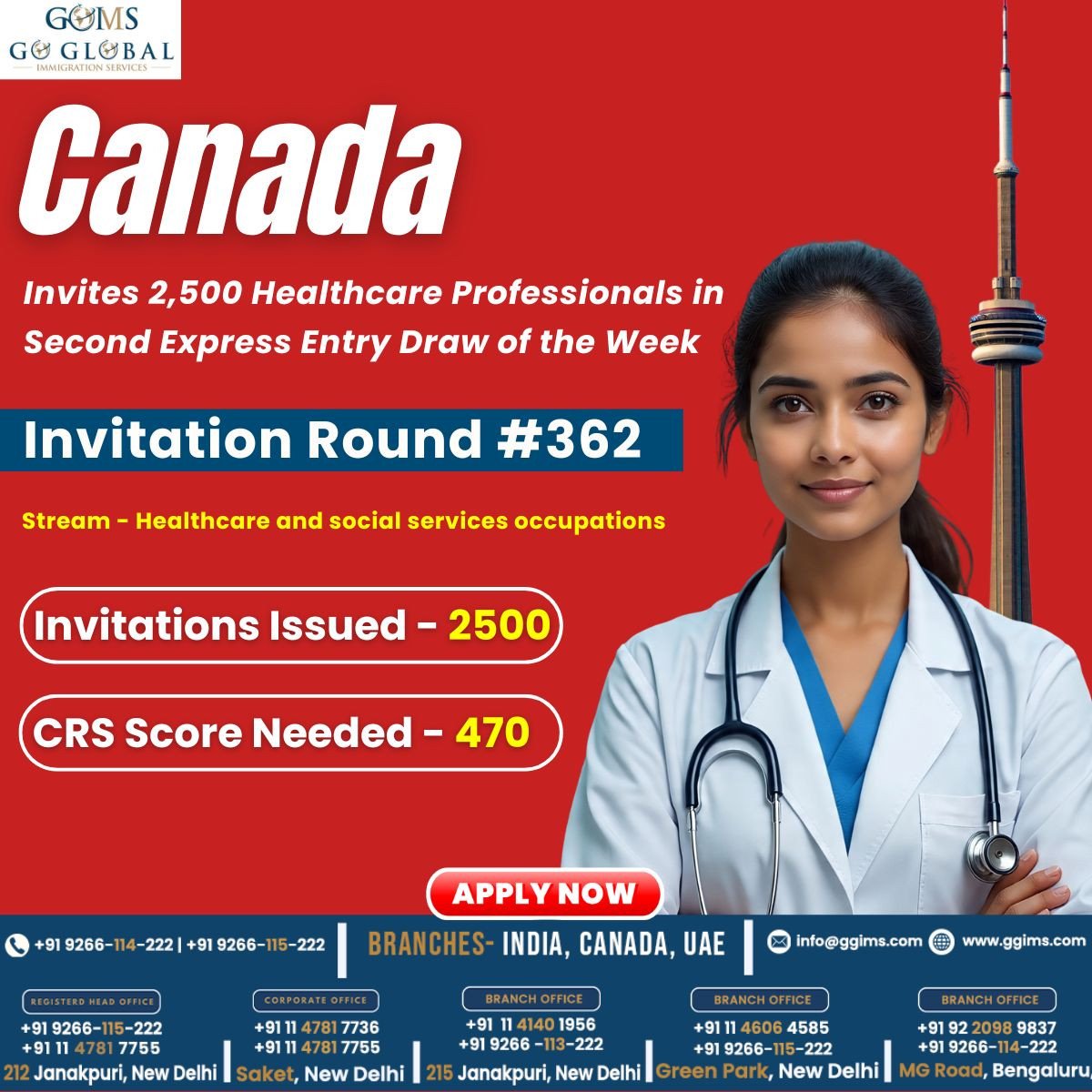Canada continues to demonstrate its commitment to attracting skilled professionals through the Express Entry system. On August 19, 2025, Immigration, Refugees and Citizenship Canada (IRCC) conducted its second Express Entry draw of the week, providing another opportunity for qualified candidates to secure permanent residence.
The latest draw highlights the government’s focus on high-demand sectors and targeted immigration streams. By prioritizing candidates with relevant skills and experience, Canada ensures that the workforce is equipped to meet the evolving needs of the economy, particularly in critical areas such as healthcare and social services.
Key Details of the Draw
Draw: #362
Number of Invitations Issued: 2,500
Stream: Healthcare and Social Services
Minimum CRS Score: 470
Tie-Breaking Rule: Profiles submitted before 8:08 p.m. UTC on April 23, 2025, were prioritized.
Draw Frequency: This is the fourth draw in this category since May 2025, showing continued focus on healthcare and social services candidates.
Targeted Streams: Provincial Nominee Program (PNP), Canadian Experience Class (CEC), and other high-demand occupational streams.
Overview of the Draw
The August 19 draw aimed to attract skilled professionals in sectors facing acute labor shortages. By issuing 2,500 Invitations to Apply (ITAs) to candidates in healthcare and social services, IRCC is addressing critical gaps that directly affect the quality and accessibility of care across Canada.
This targeted approach allows the government to prioritize applicants with experience in nursing, healthcare administration, and social work—roles that are essential for maintaining the health and well-being of communities nationwide.
The draw also reflects Canada’s broader strategy of balancing skilled immigration across multiple streams. By combining PNP and CEC candidates, the government ensures regional needs are met while integrating international talent with experience working in Canada.
Impact on Immigration
This draw has significant implications for prospective immigrants, particularly in high-demand sectors like healthcare and social services.
By targeting these occupational streams, Canada not only fills immediate labor gaps but also ensures the long-term stability and growth of essential services.
Professionals who receive an ITA can secure permanent residency, providing their families with access to healthcare, education, and social benefits. Moreover, the draw signals to prospective applicants the importance of maintaining complete, competitive profiles and staying informed about IRCC updates.
It highlights that specialized skills and Canadian work experience are highly valued, and candidates with these qualifications have a strong chance of success.
For the broader immigration landscape, these draws contribute to diversifying the workforce, strengthening regional economies, and supporting Canada’s vision of a sustainable and inclusive society.

